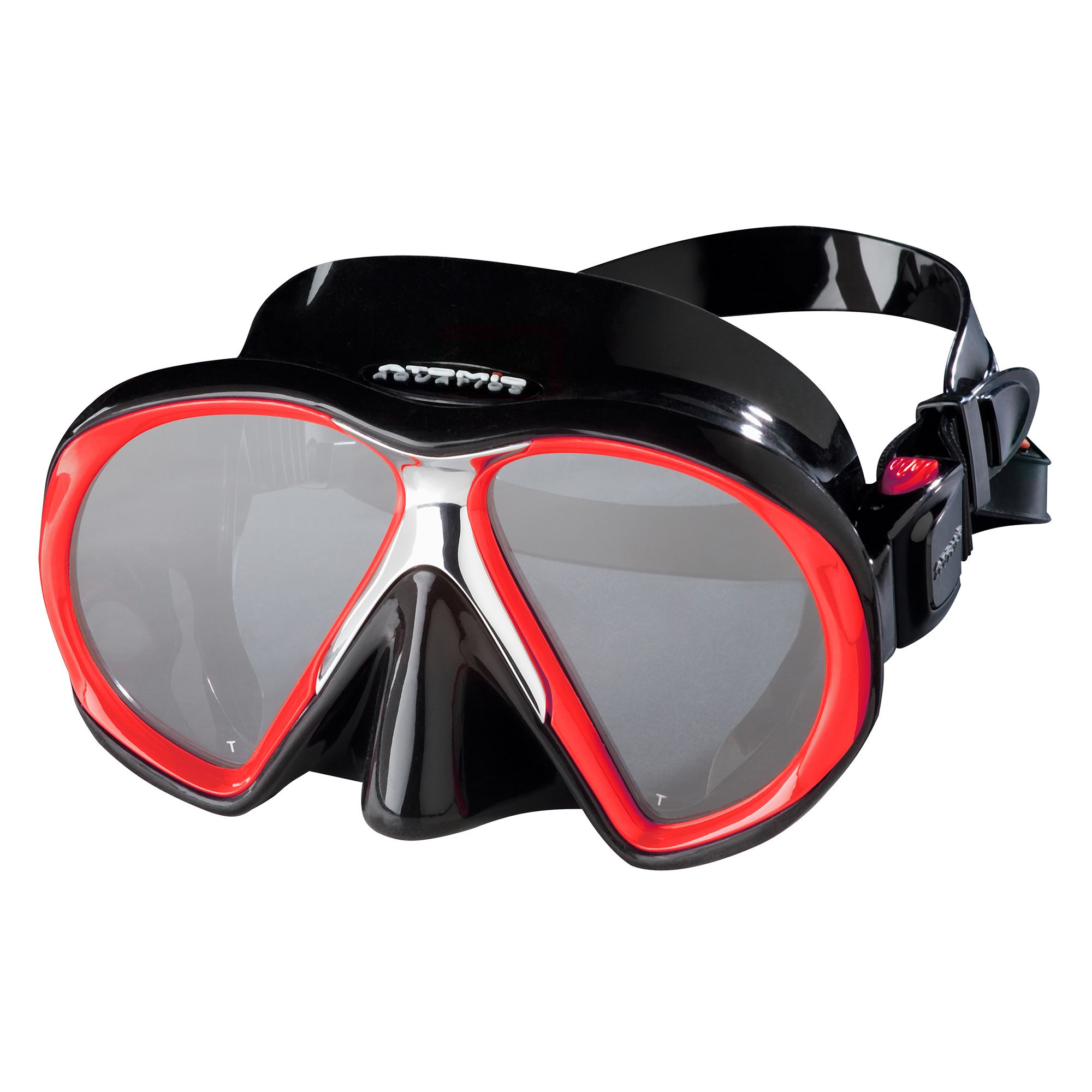
Mask
Dive masks come in many different shapes and colors. The one above is the Atomic Aquatics Sub-Frame scuba mask. You can also find masks that are frame-less, have one window, have side panels, multiple lens’s and more. When it comes to choosing a mask there really isn’t one option that’s much better than the others, it’s up to you to choose what you like most. The essential is that you choose a mask that fits you comfortably.
Average Cost: $50 – $200
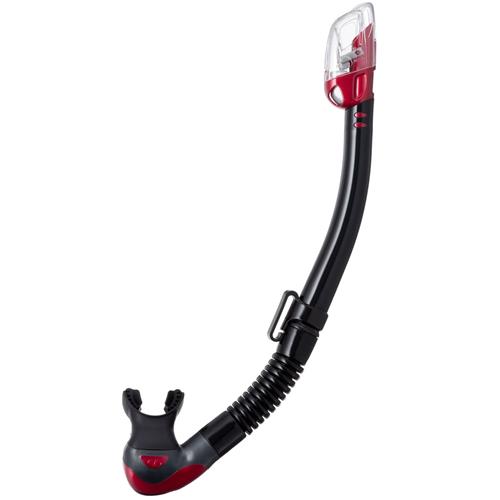
Snorkel
Snorkels are a vital part of your scuba diving equipment. If you’re planning on getting a snorkel I recommend the TUSA hyperdry elite II. A dry snorkel like this one has a mechanism inside that closes the top of the snorkel as you go underwater so that no water gets inside the snorkel while you are submerged. This is useful for many reasons, one being that you won’t have to worry about clearing your snorkel when you resurface.
When you’re purchasing a snorkel it’s very important to find one with a mouthpiece that is comfortable for you. It’s usually not easy to try out a snorkel, especially now due to the corona virus but do your best and look at the measurements of the mouthpiece if you’re buying online.
Average Cost: $20 – $100
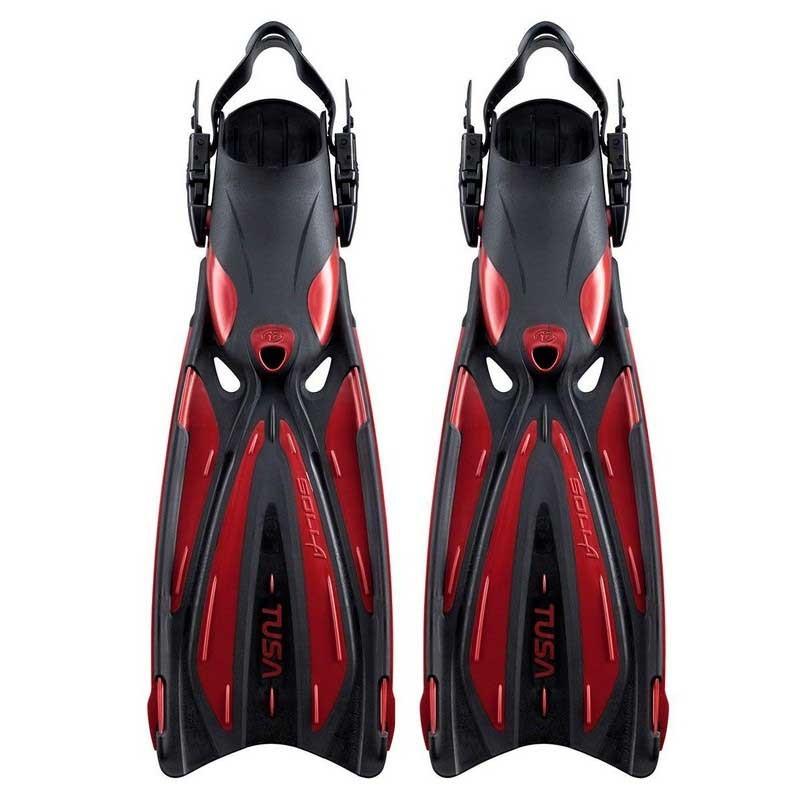
Fins
Fins are very important because they allow us to swim faster and more smoothly, as well as navigate underwater, whether that means to escape danger or to explore the marvelous depths of the ocean.
There are many types of fins including stiff, flexible, open or closed heel, blade, split, snorkeling, turtle, and freediving. Stiff fins are better for push and will allow you to travel further per kick than the flexible ones. But stiff fins can tire you out faster than flexible ones. Open heel fins are better suited for those who wear boots because they allow you to adjust the back of the fin to fit whatever boot type or size you are wearing. Better suited for warm water, the closed heel fins have flexibe rubber foot pockets that cover the heel of the diver. Blade fins are one continuous piece of rubber or plastic like the ones above. They provide greater efficiency and are better for people who don’t need to swim fast or tire their legs easily. Split fins have a large cut in the middle which reduces the amount of effort needed to kick therefore, reducing the strain on your feet and legs. Snorkeling fins are shorter than scuba fins and are better suited for shallow water. Turtle fins are for more technical dives because they are shorter so divers have less chance of kicking their surroundings like caves and wrecks. Freediving fins provide more propulsion and speed but take a little longer to master.
Average Cost: $20 – $250
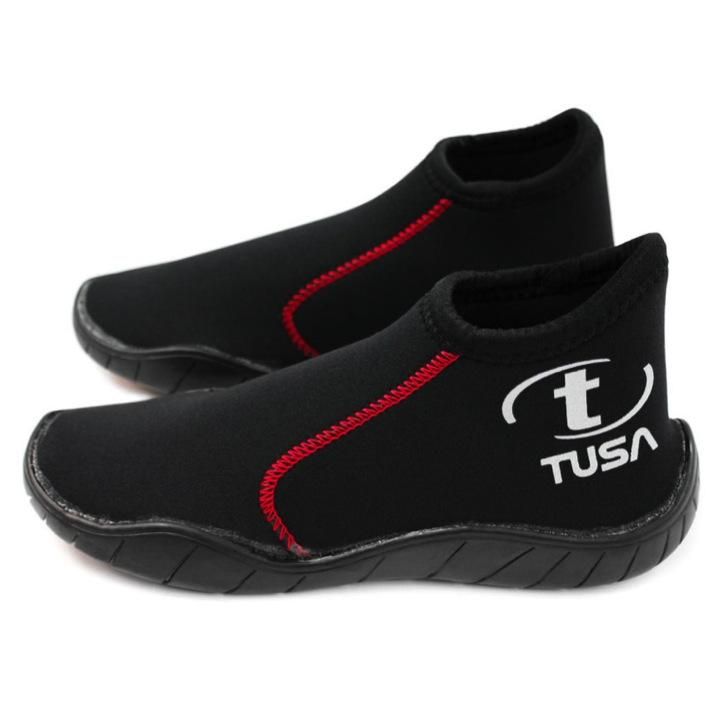
Boots
Boots are not a requirement for diving although they are useful and recommended. Their main purpose is to provide protection and warmth for your feet. They come in different thicknesses, usually between 2 and 7 mm. You can also find low cut or high cut booties. Often times the high cut boots will be the thicker ones because they provide a little more insulation in colder waters. Boots also have hard or soft soles with the hard soles providing more protection especially from the sharp objects on the seafloor.
Average Cost: $20 – $80
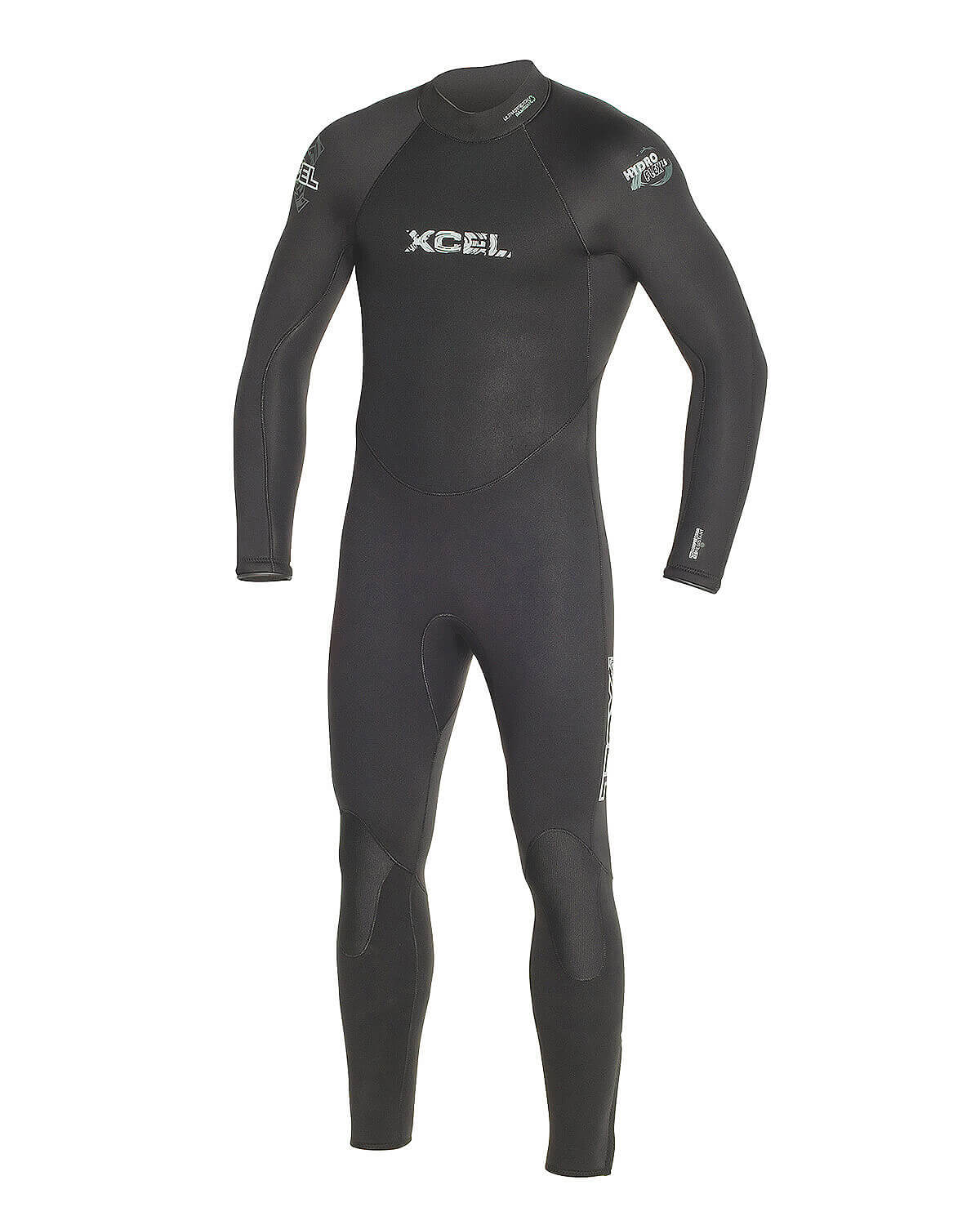
Wetsuit
There are many types of wetsuits: full body, short sleeve, sleeve-less, shorts, full suit + hood, and there are different thicknesses. When choosing a wetsuit it’s all about where you’re going to dive and how cold or how warm it is there. For warmer temperatures you might want a thin, short sleeve wetsuit. For colder temperatures you’ll probably take a thick full body suit or a hooded full body wetsuit. Remember, you don’t want to get cold while underwater because it’ll be very unpleasant and you’ll be prone to hypothermia which can be fatal. So, read up about where you’re going to dive and the climate there before hand, that way you come prepared.
Average Cost: $75 – $500+
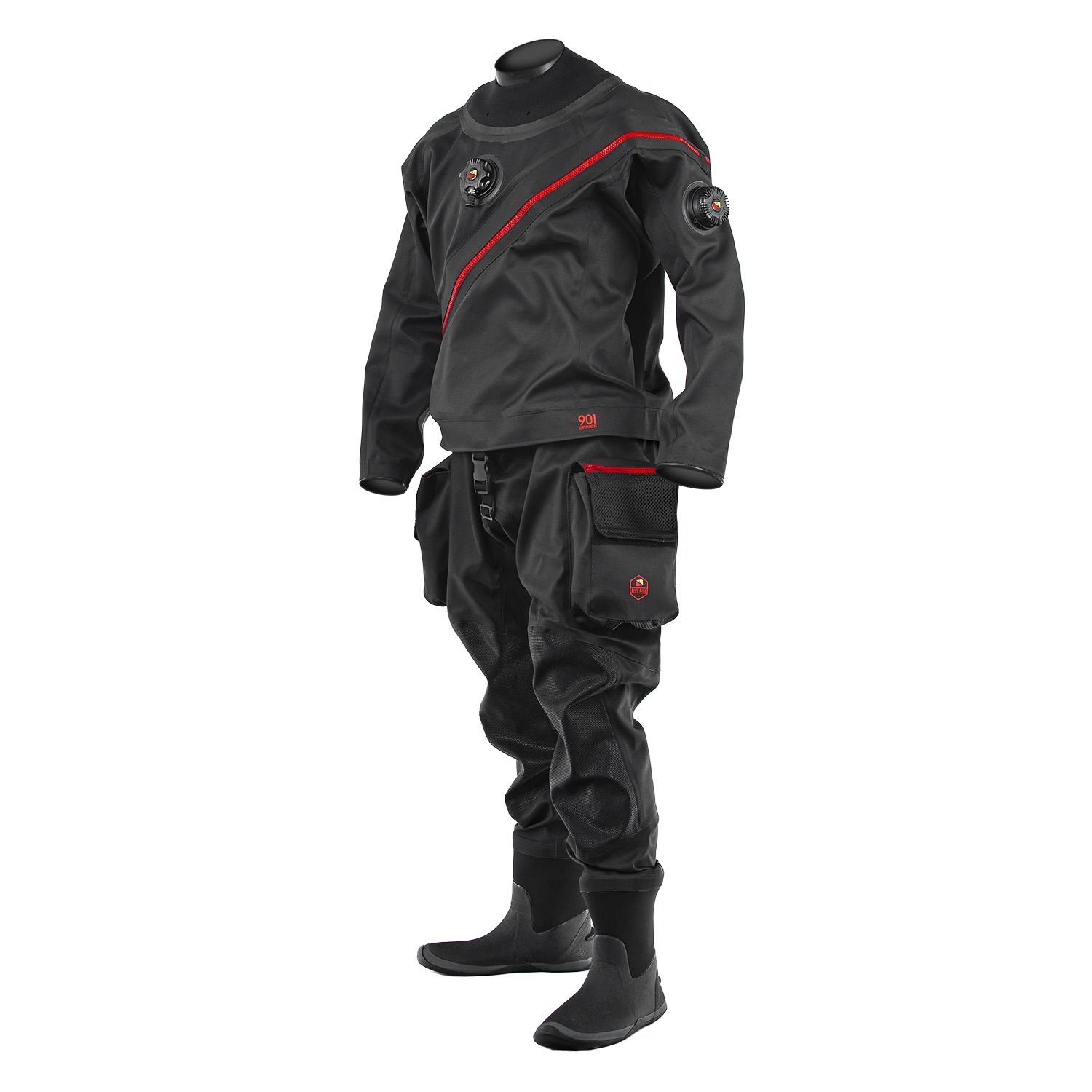
Drysuit
Drysuits are made to keep you dry, hence the name. That and their loose fit design allows divers to wear many layers of insulation under the suit, which is why they are essentially used for extremely cold water dives. Drysuits require a special training to use because buoyancy and weight control are different than with wetsuits. Your movement may also be restricted with these suits especially if you use them improperly. Although dry suits are primarily designed for cold water dives, you can find different types that work for activities such as kayaking and paddle board. The biggest difference between wetsuits and drysuits is that wetsuits use rubber neoprene to warm up the water that enters the suit and then warm you up, whereas the drysuit will keep you completely dry and warm (if you wear insulation layers under).
Average Cost: $500+
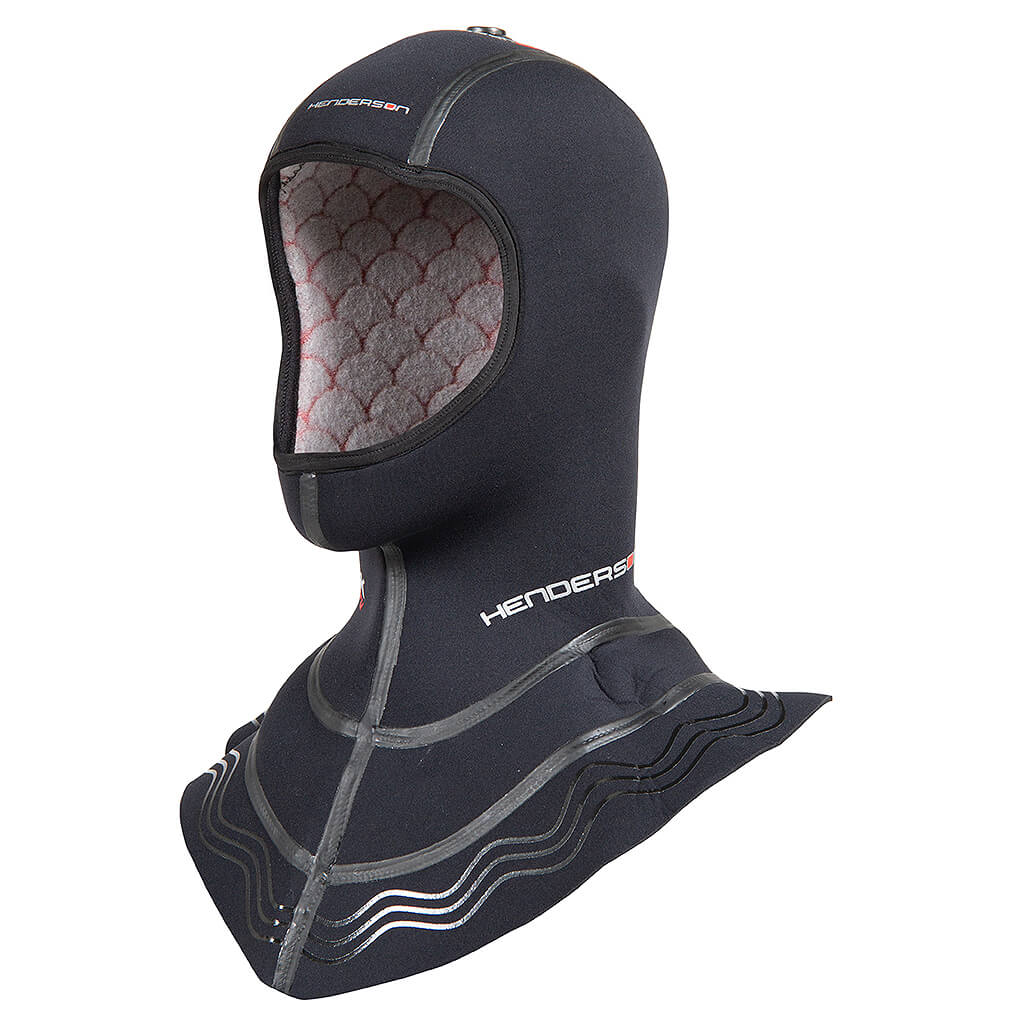
Hood
Hoods are really only used when diving in colder temperatures. Sometimes they can be integrated into a wetsuit, other times they’ll be part of a vest, or they can just be a separate piece on their own. Their use is pretty straightforward, the hood will keep your head warm while the vest will keep your chest and stomach warm.
Average Cost: $30+
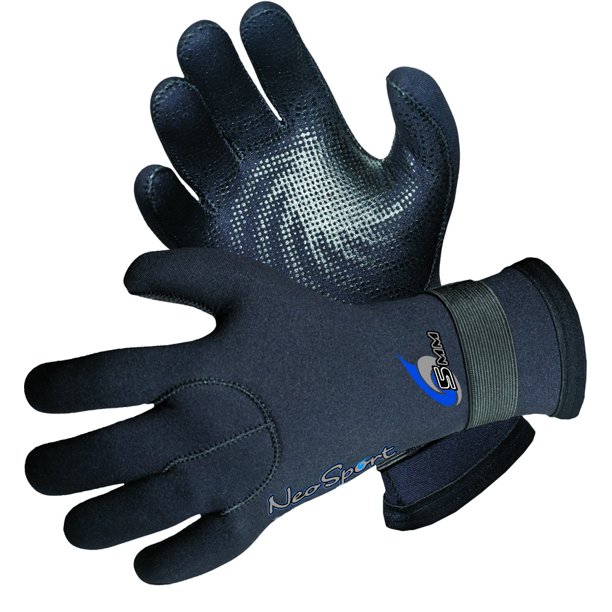
Gloves
Gloves provide protection and warmth. Often times divers use these so that they don’t get hurt when near rocks or corals. The natural oils on our skin can actually harm ocean life, so using gloves protects you from harmful objects and creatures in the ocean but they also protect things like corals from us.
Average Cost: $15 – $200
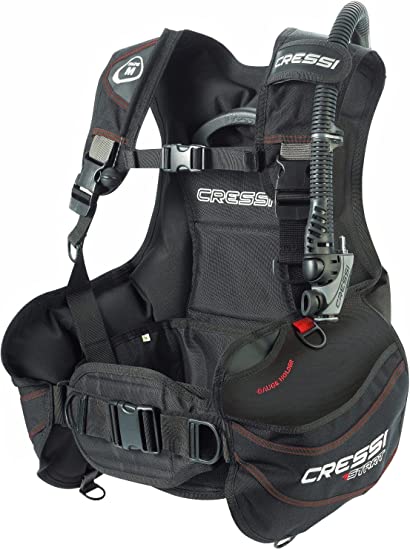
BCD
The BCD or buoyancy control device is very important when it comes to scuba diving. BCDs provide control allowing divers to establish neutral buoyancy underwater and float effortlessly above the water. The BCD has many features like straps to carry the air tank and hold the gauges and octopuses, pockets to carry the weights, a vent valve to remove air from the BCD, a low pressure inflator that connects the tank to the BCD, an inflation valve that inflates the BCD, one or two over pressurization valves that quickly remove air in case of a rapid ascent, harnesses, and D-rings for accessories.
It’s essential that the BCD fits you properly so make sure to try one on before purchasing it. If it’s too big it will float away from your back or rise up and if it is too small it will restrict your breathing and movement.
Average Cost: $200 – $1000
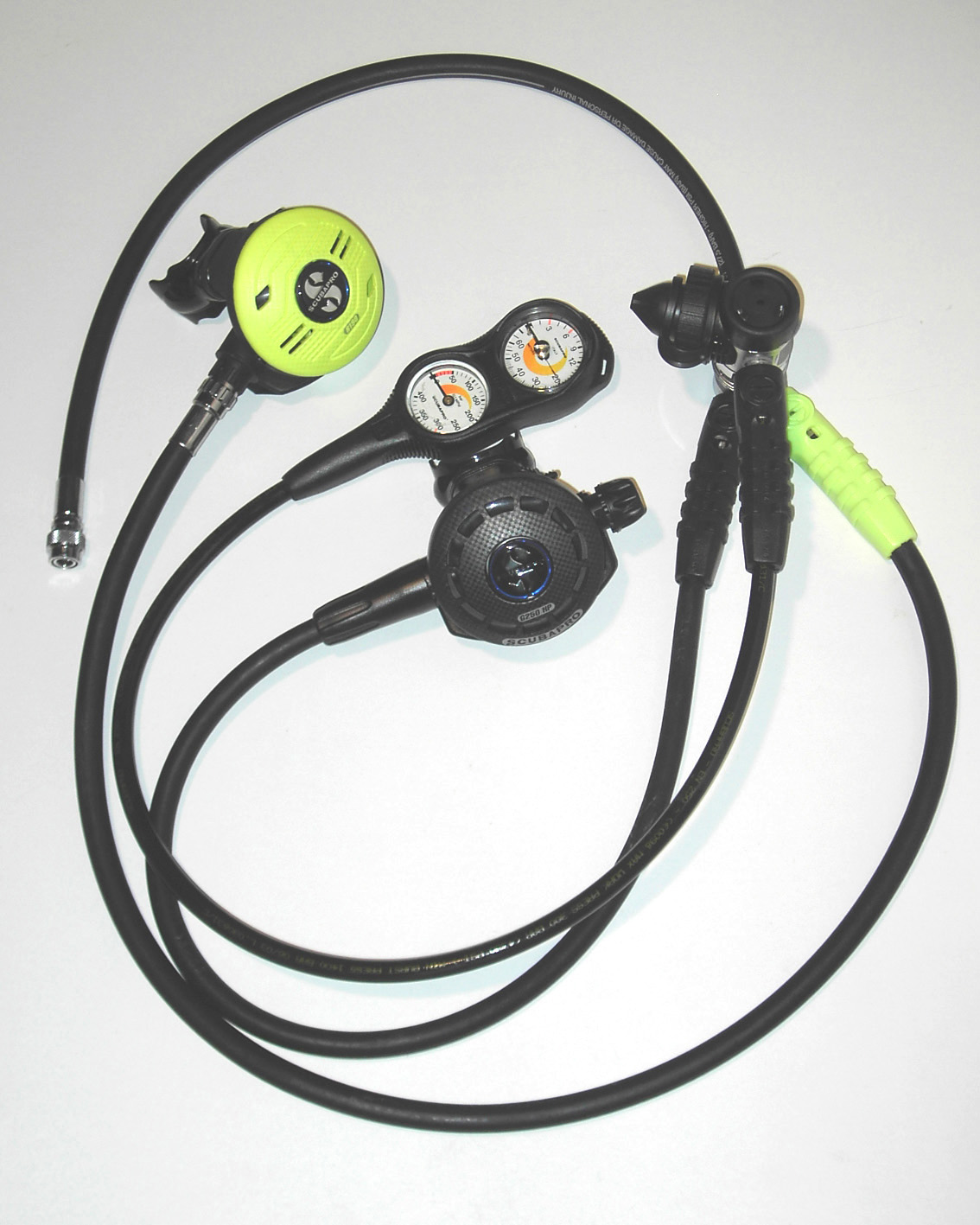
First and Second Stage
The first and second stage are primary parts of dive equipment. The first stage is the metal cylinder valve that attaches directly to the tank and has air valves to connect the second stage, console, and the inflator hose. The second stage is composed of the primary regulator and the octopus. The primary regulator is the large black regulator in the image above and is what divers use to breathe underwater. The octopus (secondary regulator) is the bright yellow regulator in the image and is used as a backup regulator in case the primary regulator fails or breaks underwater. The small tube at the top of the image is the inflator hose and connects air from the tank to the BCD, allowing divers to inflate and deflate the BCD. Finally, the console is what shows divers their depth, dive time, remaining dive time, heading (compass), remaining gas in their tank, pressure gauge, and more. Some consoles are more advanced than others and you can also purchase a wrist watch that performs the same tasks as the console.
These are some of the more expensive items in diving but they are required.
Average Cost:
-Regulator: $200 – $1000+
-Inflator: $30+
-Console: $150 – $1000
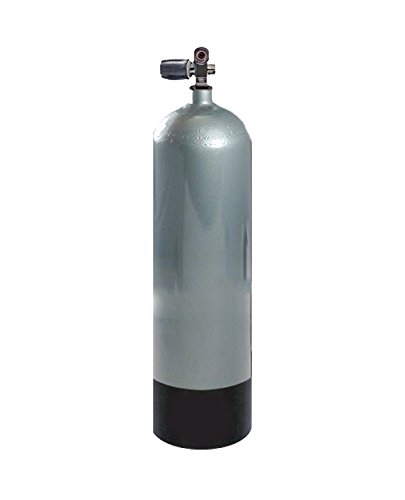
Tanks
Tanks are made of either steel or aluminum and come in many different sizes. You shouldn’t worry about purchasing your own tank because most dive locations have dive shops that will provide tanks for you. If you are interested in getting your own though, they don’t cost too much. The major thing about tanks is the maintanence. You’ll have to get your tank checked out annualy and hydrostatic tested every 5 years. You won’t be able to fill your tank yourself either, so every time it needs refill you’ll need to go to a certified place to do that. It is required that you have a certification card to be able to get your tank filled as well.
Average Cost: $300
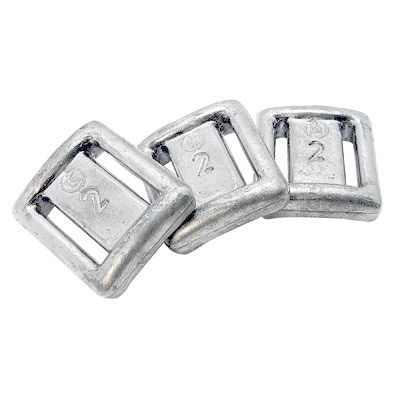
Weights
Like tanks, weights are almost always provided at a dive site or can be rented at a dive shop nearby. The weight of the weights usually ranges from 4.4 lb (2 kg) to 33 lb (15 kg). Humans are naturally buoyant which is why when you try to dive underwater in your pool or the ocean you’ll float back up if you don’t use continuous force to go down. That’s a problem when diving because the point of a dive is to go underwater and stay there for some time. So, the weights are used to adjust trim and counter our natural buoyancy. You can add weights using a weight belt or by fitting them into special side pockets on your BCD. Choosing how much weight you need depends on your weight, the thickness and style of your wetsuit, the tank you have, and if you’re diving in salt or freshwater.
Average Cost: $20+
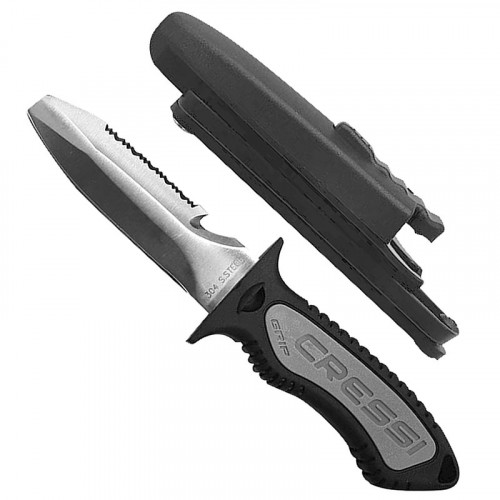
Knives
Dive knives are important because they can help in case you or marine life gets entangled or stuck in something like fishing line. They also help when you are trying to get the attention of another diver by tapping their tank. Dive knives can be attached to your BCD, clipped onto D-rings on the BCD, or strapped to your calf or thigh. Bigger is not better when it comes to knives because the bigger they are the heavier they are. You also risk getting caught in stuff if your knife is too big as it might stick out more than a smaller one.
Dive knives like the one above are multipurpose. The flat tip at the top of the knife is for safety as it prevents you from puncturing hoses, exposure suits, or BCDs. They also allow you to dig, hack, and chisel if needed. The hook looking part of the knife on the right side near the bottom is a line cutter. This comes in handy when you need to cut dive lines or small strings because you just need to slide the string in and pull. You can also purchase a line cutter seperately if you prefer.
Average Cost: $20 – $100
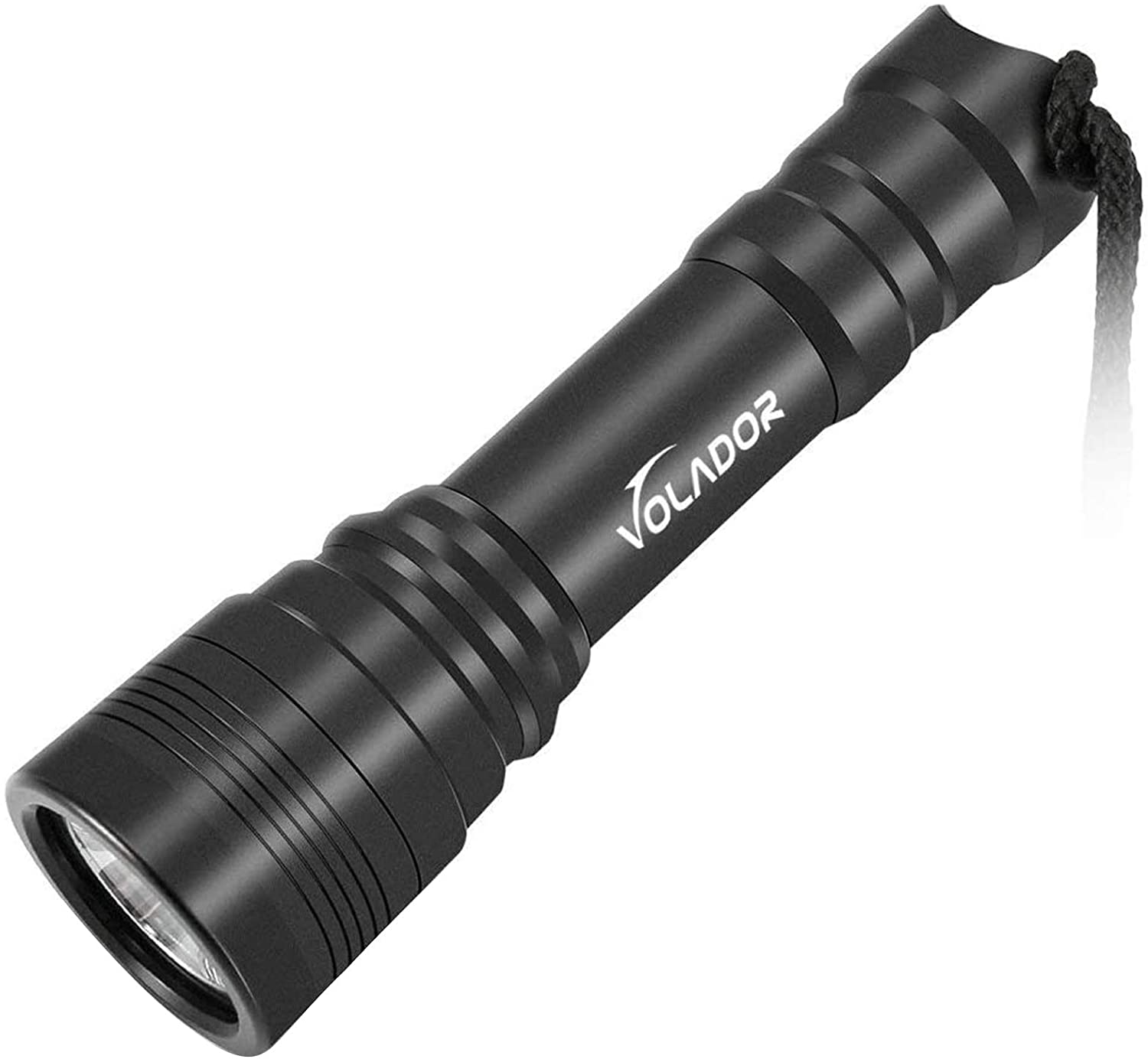
Flaslights
There are many differeny kinds of flashlights for diving. You can have those that strap onto your hand or wrist so that you don’t have to hold them. You can also get handheld flashlights. The general rule is that the brighter the light the better but after that choosing a flashlight is based on preference. It is recommended that you have a backup dive light too in case your primary light malfunctions or breaks.
Beacon lights are key when it comes diving. They are small lights that can be attached to the BCD or the tank and when underwater they flash or light up. They really help when it comes to keeping track of divers underwater especially when it is dark.
Average Cost: $30 – $100
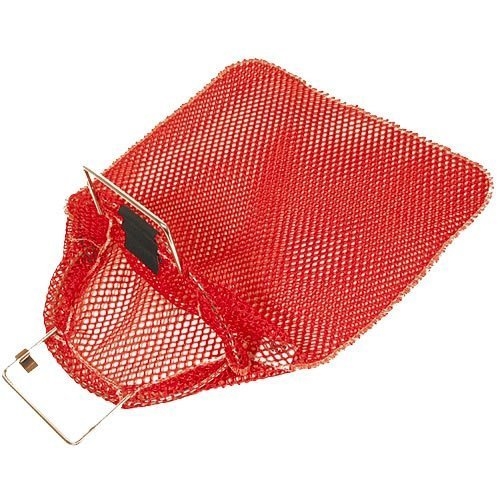
Catch Bags
Catch bags are not necessary but do come in handy. Catch bags are often used to hold things such as pollutants like cans, plastic, etc. or if you’re spearfishing and freediving you’ll want to hold your catch.
Average Cost: $10

Compass
I mentioned compasses earlier with the control panel and the first and second stage. Being underwater can be very disorientating and compasses help you navigate but using one underwater is not as easy as you may think. I do recommend taking a navigation class before diving so that you know how to properly use a compass. Believe me it will come in handy. You can purchase a compass on its own but they usually come integrated in a dive watch or control panel.
Average Cost (compass alone): $20 – $100
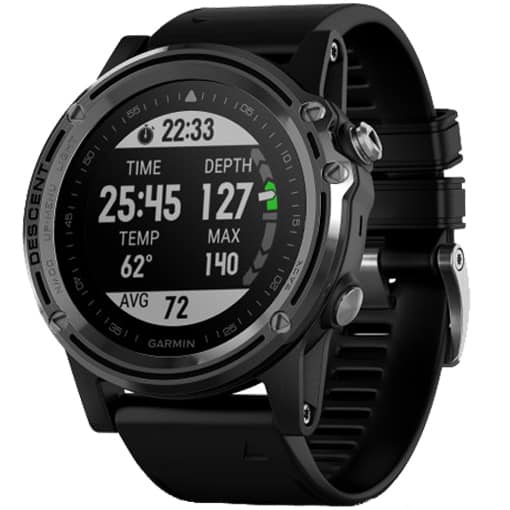
Dive Watch
Dive watches come in handy because they show divers real-time information about their dive. It can show you depth and time information as well as automatically use the decompression model to track the dissolved nitrogen in your body during a dive. Dive watches can remember your dive when you exit the water that way you can fill in your dive log. They can also have a compass integrated in them. The computer can tell you when to ascend and how long your stop before the surface should be. They have many functions so when choosing one it is best to do some research beforehand to make sure you choose the one that’s right for you.
Average Cost: $200 – $1000+
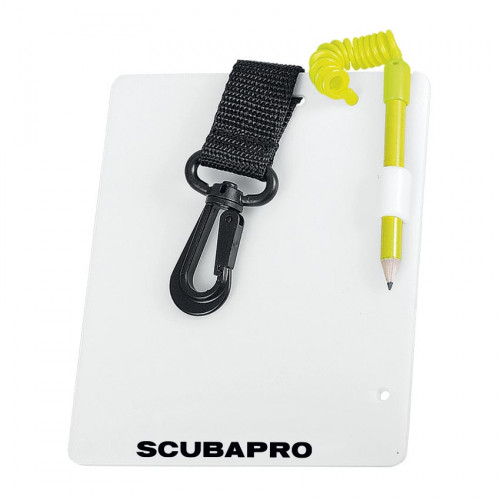
Slate and Pencil
It’s basically impossible to talk underwater especially with a regulator in your mouth, and the universal hand signals are limited. So, slates are used to help divers communicate, write down any vital information like dive time and depth, or location of something specific.
Average Cost: $10

Dive Flag
Dive flags are required by the law in most places because they indicate where there are divers underwater. Before descending you place a dive flag or float above the water and it is recommended that you stay within 300 ft of it. The dive flag allows boats and other vessels to know that there are divers that may resurface at any time, therefore they need to stay away or slow down. There are two flags used for this purpose, a blue and white one and a red and white one. Which one you should use depends on where you are and the local rules.
Average Cost: $20 – $30
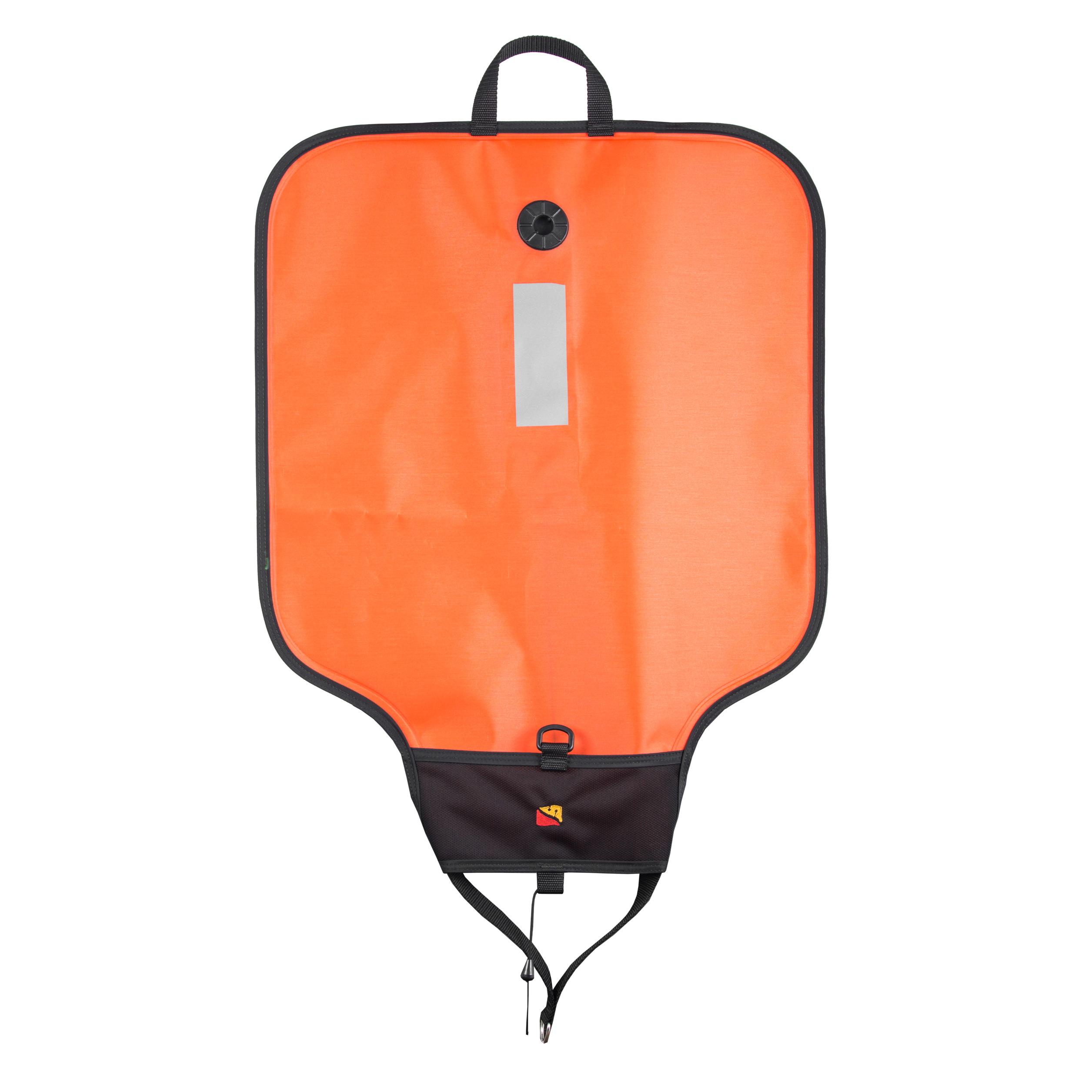
Lift Bag
Lift Bags do just what their name says. When underwater divers can unroll the bag and attach it to a heavy item that they would like to bring to the surface. Then they infalte the bag and it will slowly ascend.
Average Cost: $50 – $100
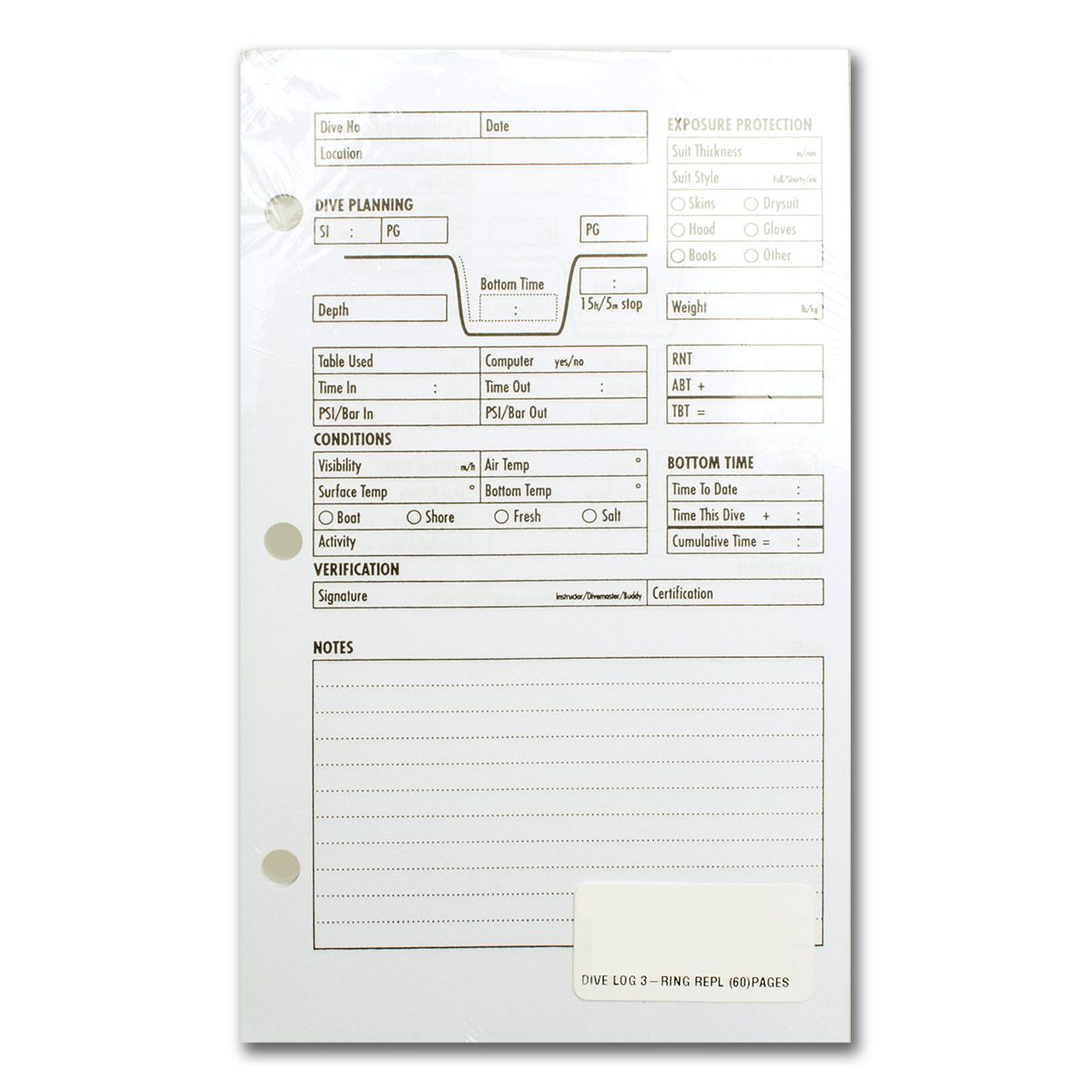
Dive Log
A dive log is used to write down the important information from your latest dive in order to remember new dives and calculate how many dives you have under your belt. You can log the time of your dive, the depth, the weight you used, the equipment you had, water and surface temperature, and more. Many people use online dive logs through apps but it is important to know how to use a physical one too.
Average Cost: $10 – $30
